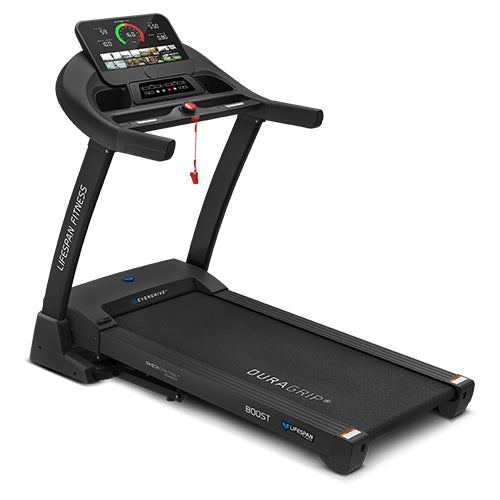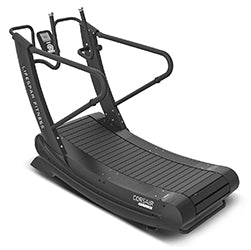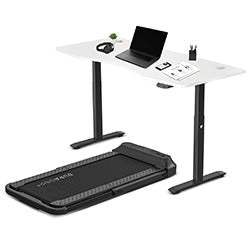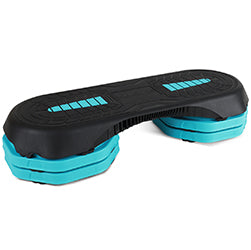

The biggest visible difference between types of cross trainer that you may have seen is front wheel drive vs rear wheel drive machines. This is probably one of the most important things to consider right off the bat when looking at cross trainers.
A rear drive will feature a fly wheel at the back, whereas a front drive will position the flywheel at the front. The flywheel is the wheel that is spun in motion by the movement of the user, providing resistance in the workout. This is similar to how a spin bike operates, the main difference between that ellipticals will incorporate both arms and legs. Which one you choose will likely have a big impact on the type of workout you can get out of it. So let’s take a look at some of the key differences between the two.
The stride length will be an important consideration for finding a cross trainer that’s compatible with your body. You want a stride length that’s compatible with your height, with taller users generally requiring a longer stride. Front drive models tend to offer the largest strides, with the longest being around 50cm in length.
Stride Feel
First is the stride feel, referring to the sensation of the machine’s motion. Rear drive cross trainers provide a hopping motion that follows the shape of the user’s body, and tend to mimic the feeling of walking downhill. Front drive cross trainers, on the other hand, create more of a flatter, natural stride. The smoother motion is created by the dual rollers that run on rails in the rear, providing that extra stability for more intense workouts. This will also be influenced by the stride width, which is the distance between the pedals. Front drive models allow the pedals to be closer to each other. This mimics a normal walking gait, as most people will naturally walk in a narrow stance. A front drive model will create a sensation of walking or running uphill, or up a flight of stairs.
Stride Length

The stride length will be an important consideration for finding a cross trainer that’s compatible with your body. You want a stride length that’s compatible with your height, with taller users generally requiring a longer stride. Front drive models tend to offer the largest strides, with the longest being around 50cm in length. Most users should look for a decent 40cm+ stride length to feel comfortable with.
Size

A bonus for rear drive machines is that they tend to be a lot smaller, making them a popular option for home gyms. With the increased stride length of front drive models, they tend to take up a lot more space, which may be a drawback for some users.
Max Weight
Front drive models will also generally have a higher maximum weight capacity, as the weight will be distributed over the rollers, rather than the crank of the machine. A higher weight capacity will also provide a smoother and more stable motion.
Incline

Incline is commonly found in many front drive models and can be manually adjusted to add more resistance and versatility to your workout. Training on an incline can lead to muscles growth and definition as the high resistance movement simulates climbing up a hill or stairs, similar to walking on a treadmill incline.
Repairs and Maintenance
Front drive models, which naturally have more moving parts and can be considerably larger, usually require a greater amount of maintenance and are more likely to have mechanical problems. Rear drive machines are simpler in design, and so won’t break down as easily, and maintenance will be relatively simple. Keep in mind that this will all depend on what specific model you’re working with and how well it’s taken care of, so make sure to give your production manual a read to familiarise yourself with all maintenance requirements.
Which is best for you?

There are quite a few considerations here, and a lot of it will come down to what provides the most comfortable overall workout for you. Rear drive models tend to be a more popular home gym option, as they usually take up much less space. However, for taller users you may want to opt for a front drive, as it will create the most comfortable workout experience. Apart from these considerations, the rest will mostly be up to personal preference, so it’s best to try out a few different ones if you can to find the most suitable for your fitness space.
Having said all this, there is still plenty of variation with both front and rear drive models, making the difference between them more of a broad categorisation, rather than a definite distinction. If you have any questions or queries regarding the Lifespan Fitness range of elliptical cross trainers, don’t hesitate to reach out to our team and we’ll help you find the best option for you.
















































